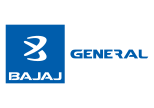How To Make A Reimbursement Claim In Health Insurance?
Table of Contents
Claiming a health insurance policy is one of the crucial steps as it has to be done on time without any confusion. To avoid any confusion, you must go through the terms and conditions of the purchased policy beforehand. This will ensure that the ailments and emergencies that you are looking forward to are insured with your plan. Claiming settling process has to begin as early as possible to give the insurer enough time to process your request. And as soon as the request is accepted, the claim amount is transferred to you or is directly paid to the hospital.
To get a cashless claim where the claim amount is directly transferred to the hospital to clear off your medical bills by the insurer, you must get yourself treated in a network hospital that is linked with the insurer. You can produce your health insurance card at the hospital desk and seek cashless treatment. But, in case of medical emergencies or willingness, you get hospitalized in a hospital of your choice, then you have to clear the medical bills which are later compensated by the insurer.

What Is A Reimbursement Claim?
In case of a reimbursement claim, you can seek treatment in any hospital of your choice. Later, on submission of the necessary documents along with the discharge copies, you can get the claim amount transferred to your bank account. Under this claim settlement process, you must file a claim request within 30 days of discharge of the patient. Reimbursement facilities can be availed at both network or non-network hospitals.
How To File A Reimbursement Claim For A Health Insurance Policy?
To file a claim settlement request under reimbursement claim, you must follow the below-mentioned steps:
- Collect your hospital bills - You must have all the hospital bills like medical bills, receipts, discharge documents, invoices, lab reports, X-rays, etc. in the order of occurrence to claim a reimbursement claim settlement process. You are supposed to submit these documents with the claim settlement form to the insurer to confirm the amount spent on your medical treatment.
- Fill the reimbursement form - A form provided by the insurer, either online or offline, has to be duly signed and carefully filled by the policyholder to make a reimbursement claim. The form should be submitted by post, fax, etc. to the insurance company along with the hospital bills collected. You must always keep a copy of these documents.
- After the form is submitted, the insurer will contact you regarding the claim request. It can be accepted or rejected based on the mentions in the health insurance policy. Therefore, you must carefully go through the fine print of your purchased policy to avoid any confusion.
- Once the documents are verified and the request is processed, your claimed amount will be transferred to your bank account.
Documents Required To Make A Reimbursement Claim Under A Health Insurance Policy
Following is the list of documents that are required to be submitted to the insurer by the policyholder to make a reimbursement claim. The documents can be original or a copy, depending on the insurer. The list of required documents includes:
- Health insurance card, provided by the insurer.
- Medical consultation papers
- Valid ID proof
- Duly filled claim form
- Diagnosis and treatment reports like X-rays, blood reports, etc.
- Medico-legal certificate and copy of FIR, in case of an accident.
- Invoice of the pharmacy along with the prescriptions by the doctor.
- Discharge documents
- Any other relevant document, as asked by the insurer.
Conclusion
You can file a reimbursement claim with ease if you are aware of the claim settlement process of your purchased health insurance policy in advance. Therefore, you should always go through the policy-related documents carefully.
Must Read: Mediclaim Insurance Policy: Tips to File Reimbursement Claims
Cashless VS Reimbursement Claims in Health Insurance
Disclaimer: This article is issued in the general public interest and meant for general information purposes only. Readers are advised not to rely on the contents of the article as conclusive in nature and should research further or consult an expert in this regard.


















































